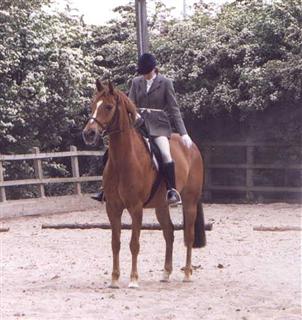Caspian horse
Caspian pony (nick Mouleki or Pouseki)
Sun, 17th November, 2024 - 8:42 pm GMT
Sponsor Ads:

Alternative Name
Caspian pony (nick Mouleki or Pouseki)Basic Info
The Caspian is actually a miniture horse, and not a pony, despite reaching a maximum of 12 hh. It is thought to be one of the oldest horse or pony breeds in the world today, dating back from the now extict miniature horses of Mesopotamia, who lived in the region from 3,000 BCE until the 7th century. The ponies now inhabit an area between the Caspian Sea and the Elburz Mountains. The ponies range from 10.2-12 hh, and average at 11 hh. However, improved feeding programs at the Norouzabad stud has resulted in horses with a height smaller than their parents, which may indicate that the original size of the breed is around 9 hh. Additionally, it is likely that the stock is not completely pure.
Health
Some ponies lack chestnuts or ergots. Some ponies have 65 chromosomes, other 64. The ponies also have an additional molar on each side of the upper jaw. There are no records of breeding, however the ponies, when bred, are true to type and are therefore an established breed. Several studies are currently being performed to determine whether the pony is the ancestor of the modern hotblooded breeds, including the Arabian. A study found that there are several anomalies with the Caspian compared to other breeds, including: -The skull differes, with pronounced elevation of the interparietal bones and no parietal crest -The scapula is wider then normally found in equines -The metacarpal and metatarsal bones are much longer and slimmer in relation to size -The hooves are narrow and oval-shaped, and the frog is less pronounced than other equines -The first six vertebrae are longer than usual -Possesses an extra molarHabitat
N/ABehavior
The Caspian Pony is extremely hardy, with very dense bone and hard feet that do not need shoeing. Additionally, the pony is of great quality, similar in build to the Arabian. The head should be short and fine with large eyes and a tapering muzzle. The nostrils are large and low-set, and the ears should be very small (no larger than 4.5 inches long). The shoulder is sloping, allowing the pony to take exceptionally long strides, so that it can easily keep up with a horse at the walk, trot, and canter despite its small height. The body of the Caspian is narrow, with a high-set tail and strong hindquarters. Although the limbs are fine, they have dense bone, the pasterns are fine and sloping, and and the hooves are oval like an ass, and very strong. There is little feathering on the fetlock, although the pony has a dense mane and tail. Caspians are usually bay or black, but may also be gray or chestnut, and may occassionally have white markings on the head and legs. Interestingly, some ponies lack chestnuts or ergots.Origin
IranHistory
The Caspian Pony was rediscovered in 1965 in a mountainous region of Northern Iran, not far from the Caspian Sea, by American Louise Firouz. Firouz was searching for small ponies to be ridden by children, when she happened upon a bay stallion in the town of Amol. The horse was pulling a heavy cart, and was nicely conformed with the body of a "well-bred oriental horse." She purchased the stallion, naming him Ostad, and he became a successful sire of children's ponies and a foundation for her breeding program. Finding that the animals were few in number and in poor condition, she began a breeding program at her riding school in Norouzabad, starting with seven mares and six stallions.Common Foods
grassSponsor Ads:
Benchley's Distinction: There are two types of people: those who divide people into two types, and those who don't.
Caspian horse
Coded by: BGID® | ALL RIGHTS RESERVED Copyright © 2000-2024
Disclaimer | Privacy | Report Errors / Contact | Credits









 Beware the new Naval power, they are planning to come on stream with big naval might to match their ground forces. Chinese Aircraft Carrier - Chinese Navy
Beware the new Naval power, they are planning to come on stream with big naval might to match their ground forces. Chinese Aircraft Carrier - Chinese Navy  versus
versus 
 versus
versus  This Thread is about the North Korean Military itself - the kind of army, navy, and air force they have.
This Thread is about the North Korean Military itself - the kind of army, navy, and air force they have. 
 versus
versus  versus
versus 
 versus
versus  versus
versus